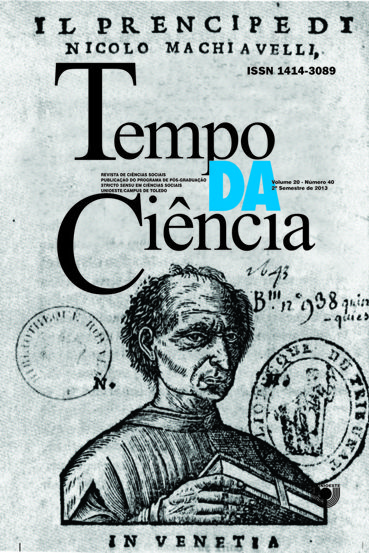O “Novíssimo Príncipe”. Gramsci e a reconstrução da teoria marxista do partido
DOI:
https://doi.org/10.48075/rtc.v20i40.10052Keywords:
Revolutionary Party, ‘Modern Prince’, Antonio Gramsci. 1 INTRODUÇÃO AAbstract
It is only in his Prison Notebooks, through the political formulacrystallized in the 'Modern Prince', that gramscian theory of the politicalparty reaches its final configuration. Beyond to direct dialogue with theleninian formulations and those subsequently developed by the CommunistInternational, is also noticeable echoes of critical dialogue withelitist sociology of the political party of Robert Michels. Largely, is thanksto this critical and nonsectarian approach that Gramsci could produce oneof the most original reflection on the party organization within the Marxisttradition, facing the issues previously neglected of oligarchyzation and142ARTIGO Tempo da Ciência Volume 20 Número 40 2º semestre de 2013bureaucratization of workers' parties, thus providing a possible theoreticaloverrun for the inevitability of elitist thesis of split between the party leader'score interests and the interests of their social reference. The objectiveof this work is to restore some contributions of Gramsci to the reconstructionof theory of the revolutionary party today.Downloads
Published
How to Cite
Issue
Section
License
Aviso de Direito Autoral Creative Commons
Política para Periódicos de Acesso Livre
Autores que publicam nesta revista concordam com os seguintes termos:
1. Autores mantém os direitos autorais e concedem à revista o direito de primeira publicação, com o trabalho simultaneamente licenciado sob a Licença Creative Commons Attribution que permite o compartilhamento do trabalho com reconhecimento da autoria e publicação inicial nesta revista.
2. Autores têm autorização para assumir contratos adicionais separadamente, para distribuição não-exclusiva da versão do trabalho publicada nesta revista (ex.: publicar em repositório institucional ou como capítulo de livro), com reconhecimento de autoria e publicação inicial nesta revista.
3. Autores têm permissão e são estimulados a publicar e distribuir seu trabalho online (ex.: em repositórios institucionais ou na sua página pessoal) a qualquer ponto antes ou durante o processo editorial, já que isso pode gerar alterações produtivas, bem como aumentar o impacto e a citação do trabalho publicado (Veja O Efeito do Acesso Livre).
Licença Creative Commons
Esta obra está licenciada com uma Licença Creative Commons Atribuição-NãoComercial-CompartilhaIgual 4.0 Internacional, o que permite compartilhar, copiar, distribuir, exibir, reproduzir, a totalidade ou partes desde que não tenha objetivo comercial e sejam citados os autores e a fonte.


